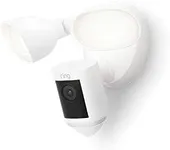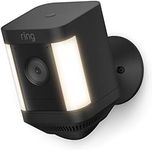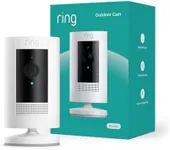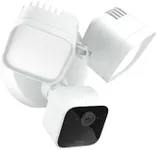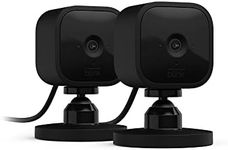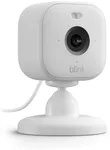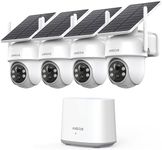Buying Guide for the Best Wireless Home Security Cameras
Choosing the right wireless home security camera can be a daunting task, but with the right approach, you can find a model that fits your needs perfectly. The key is to understand the various specifications and features that these cameras offer and how they align with your specific requirements. By focusing on the most important specs, you can make an informed decision that ensures your home is well-protected.ResolutionResolution refers to the clarity of the video captured by the camera. Higher resolution means clearer and more detailed images. Common resolutions include 720p (HD), 1080p (Full HD), and 4K (Ultra HD). If you need to identify faces or license plates, a higher resolution like 1080p or 4K is ideal. For general monitoring, 720p may suffice. Consider your need for detail when choosing the resolution.
Field of ViewField of view (FOV) is the extent of the observable area the camera can cover. It is measured in degrees. A wider FOV means the camera can cover more area, which is useful for monitoring large spaces. Typical FOV ranges from 90 to 180 degrees. For small rooms or specific entry points, a narrower FOV is adequate. For larger areas like backyards, a wider FOV is preferable.
Night VisionNight vision allows the camera to capture clear video in low-light or no-light conditions. This is crucial for 24/7 surveillance. Night vision capabilities are often measured by the distance they can cover in the dark, usually in feet or meters. If you need to monitor areas that are not well-lit at night, look for cameras with strong night vision capabilities, typically 30 feet or more.
Motion DetectionMotion detection is a feature that triggers recording or alerts when movement is detected. This helps in conserving storage and ensuring you are notified of any activity. Some cameras offer adjustable sensitivity levels to reduce false alarms. If you want to be alerted to any movement, ensure the camera has reliable motion detection. For high-traffic areas, adjustable sensitivity is beneficial.
Two-Way AudioTwo-way audio allows you to listen and speak through the camera. This can be useful for communicating with family members, pets, or even deterring intruders. If you need to interact with people or pets remotely, look for cameras with clear two-way audio. For basic monitoring, this feature may not be necessary.
Storage OptionsStorage options refer to how the video footage is saved. Common options include local storage (SD cards) and cloud storage. Local storage is often more secure but limited in capacity, while cloud storage offers more space and accessibility but may require a subscription. Consider how much footage you need to store and how you prefer to access it when choosing between local and cloud storage.
Power SourceWireless cameras can be powered by batteries or plugged into an electrical outlet. Battery-powered cameras offer more flexibility in placement but require regular recharging or battery replacement. Plug-in cameras provide continuous power but need to be near an outlet. Decide based on where you want to place the camera and how often you can manage battery maintenance.
Smart Home IntegrationSmart home integration allows the camera to work with other smart devices and systems, such as Amazon Alexa, Google Assistant, or Apple HomeKit. This can enhance your home automation setup and provide more control options. If you have a smart home ecosystem, look for cameras that are compatible with your existing devices. For standalone use, this feature may not be as critical.
Weather ResistanceWeather resistance is important for outdoor cameras to withstand various weather conditions like rain, snow, and extreme temperatures. Look for cameras with an IP rating (e.g., IP65, IP67) that indicates their level of protection against dust and water. If you need an outdoor camera, ensure it has a high weather resistance rating. For indoor use, this feature is not necessary.

